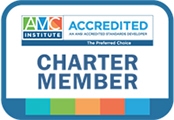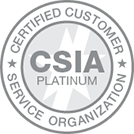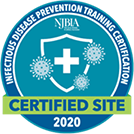A colleague recently sent me an article (albeit, a bit dated) titled “What Business Execs Don’t Know — but should — About Non-profits,” which provided some interesting perspectives from business leaders that had made the leap to become CEOs of non-profits.
What was interesting from an association perspective was some of the key insights this article provided relative to leadership development for the future of the nonprofit sector. Specifically, the article’s authors, Les Silverman and Lynn Taliento, note how much more difficult for-profit business leaders find the transition into the non-profit world.
Strategic leadership development is a huge challenge for any organization, whether for-profit or non-profit. But, the non-profit sector provides many additional challenges and pitfalls, which, unless acknowledged, can doom CEOs for failure. Many trade associations and professional societies are at a crossroads in terms of the next generation of leaders. The current board must be thinking in terms of the next 5-10 years when recruiting new volunteers to fill the leadership void.
Silverman and Taliento have identified several challenges that most business leaders fail to appreciate when making the transition to the non-profit world. It is essential that volunteer leaders also identify with these challenges. This is critical to the future of the organization.
Leadership Challenge 1: More Collaborative Decision-Making Process
Unlike in many businesses where owners make all the key decisions affecting their company, when you serve on a volunteer board it is absolutely imperative that you seek out input from a wide variety of stakeholders, including members and other volunteer leaders. You cannot operate in a vacuum and make unilateral decisions based upon instinct and experience. As the article’s authors note, “For business executives who are used to being the boss, the nonprofit setting harbors a rude awakening.”
Remember, this is not your office, your hospital, campus, warehouse, or manufacturing business, this is a collection of like-minded constituents who desire and deserve a say in the future of the organization, and who, if not consulted on key decisions, might feel alienated and disenfranchised. The key is to communicate what you’re thinking, build consensus, and use the information to make the best decisions for the collective membership.
Leadership Challenge 2: Different Measures of Success
Once decisions are made, the next challenge is to measure the success of those decisions. But how?
For your business or profession, the proof of your success is in your financial statements. Profitability is a key metric you rely upon every day to drive your decisions. But, when you cross over into the non-profit world, the financial success of the organization is only one measure of success.
It’s important to develop other meaningful metrics. The authors note to measure success through examining these questions.
- Are the members satisfied with the work of the organization? You’ll never know, unless you ask.
- How many members take advantage of the products and services the organization offers?
- What percentage of the membership have attended an association meeting over the past 12 months?
- Are the organization’s publications delivering on the expectations of the reader?
Benchmark, compare, analyze, and then use the information gathered to drive your decisions.
Leadership Challenge 3: Limited Resources
Another challenge faced by volunteer leaders of non-profits is that they are often expected to do more with less. This is a challenge for staff as well. As Judy Vrendenburgh, former CEO of Big Brothers Big Sisters and former CEO of March of Dimes notes in the article, “Every time we in non-profits satisfy customers, we drain resources, and every time for-profits satisfy customers, they get resources back.”
Whoa! Financial resources, in particular, are in short supply, and this fact is especially salient for associations and professional societies like yours. But all is not lost. The key for the non-profit sector is to rely on the strength of the organization’s mission, which, for many organizations, involves bringing together like-minded individuals and businesses to share ideas for the betterment of the industry.
Volunteering to Serve is No Picnic
Building consensus when you’re used to the adage “the buck stops here” is not easy. Measuring success or failure in tangible ways is a moving target. And the resources to do what you think is best for the future of an organization are often scarce. But the rewards can also be tremendous. The key is to have a vision and not just focus on the day-to-day tasks. As successful professionals, you have the raw skills necessary to make a difference. All we ask is that you step up to the plate. You’ll be glad you did.




